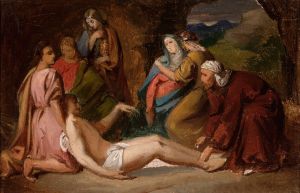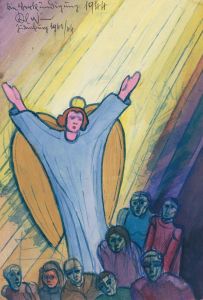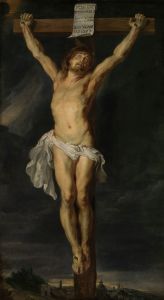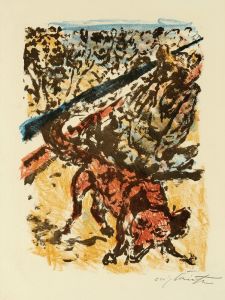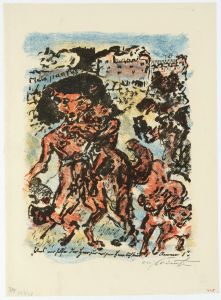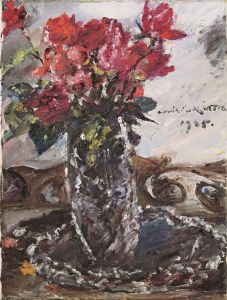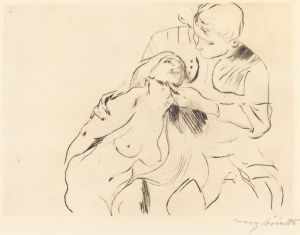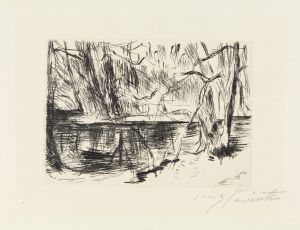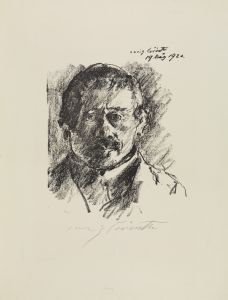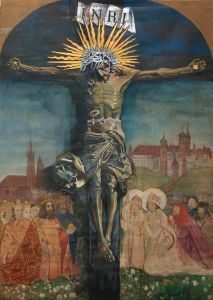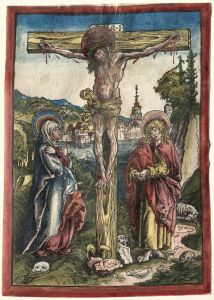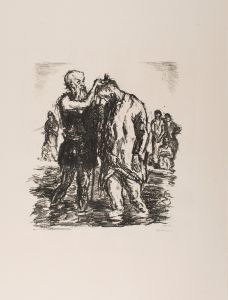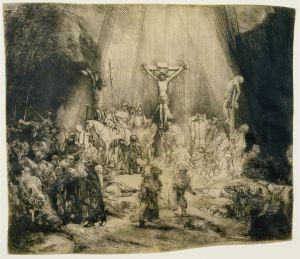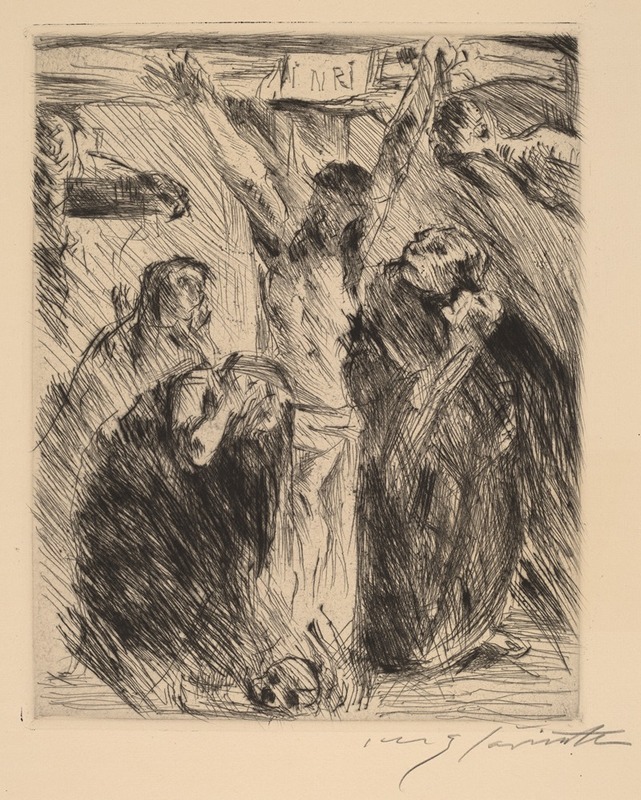
Crucifixion
A hand-painted replica of Lovis Corinth’s masterpiece Crucifixion, meticulously crafted by professional artists to capture the true essence of the original. Each piece is created with museum-quality canvas and rare mineral pigments, carefully painted by experienced artists with delicate brushstrokes and rich, layered colors to perfectly recreate the texture of the original artwork. Unlike machine-printed reproductions, this hand-painted version brings the painting to life, infused with the artist’s emotions and skill in every stroke. Whether for personal collection or home decoration, it instantly elevates the artistic atmosphere of any space.
Lovis Corinth's Crucifixion is a painting created in 1907 by the German artist, who was a prominent figure in the transition from Impressionism to Expressionism. Corinth is known for his dynamic brushwork, emotional intensity, and ability to blend traditional themes with modern artistic approaches. This work is one of his many explorations of religious and historical subjects, which he often infused with psychological depth and dramatic tension.
The painting depicts the crucifixion of Jesus Christ, a central event in Christian theology. Corinth's interpretation of this scene is notable for its raw emotional power and unflinching portrayal of human suffering. The composition features Christ on the cross, surrounded by figures that include onlookers, mourners, and Roman soldiers. The artist's use of bold, expressive brushstrokes and a vivid color palette heightens the emotional impact of the scene, emphasizing the agony and chaos of the moment.
Corinth's Crucifixion reflects his interest in the human condition and the complexities of faith and suffering. Unlike traditional depictions of the crucifixion, which often focus on idealized or serene representations, Corinth's version is more visceral and grounded in human emotion. This approach aligns with the broader trends in early 20th-century art, where artists sought to break away from academic conventions and explore more personal and subjective interpretations of familiar themes.
The painting was created during a period of significant artistic and personal development for Corinth. In 1907, he was at the height of his career and had established himself as a leading figure in the Berlin Secession, an influential group of artists who challenged the conservative art establishment in Germany. However, just a few years later, in 1911, Corinth suffered a stroke that temporarily impaired his ability to paint. This event marked a turning point in his life and work, leading to a more introspective and expressive style in his later years.
Today, Crucifixion is regarded as an important example of Corinth's ability to reinterpret traditional subjects through a modern lens. The painting is housed in the Kunsthalle Bremen, a museum in Bremen, Germany, which holds a significant collection of Corinth's works. It continues to be studied and appreciated for its artistic innovation and emotional resonance.
This artwork exemplifies Corinth's unique contribution to modern art, bridging the gap between 19th-century realism and the emerging expressionist movement of the early 20th century.





